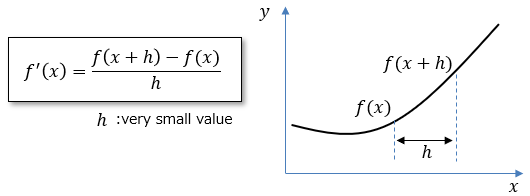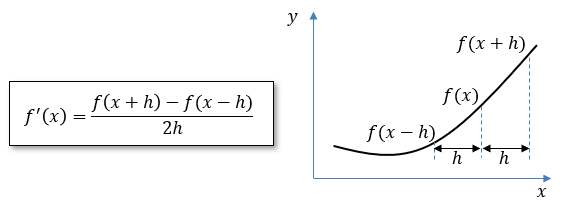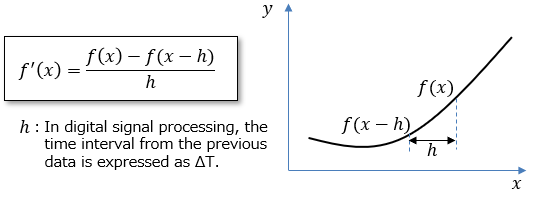What is numerical differentiation? Euler method |
||||
・Exponential function ・Arctan, tanh ・Matrix multiplication ・Transposed matrix ・Fourier transform ・Fast Fourier Transform ・Matrix derivative ・Manhattan/Euclidean distance ・Centroid ・Vertical bar ・Gaussian integral ・Cosine similarity ・summation Σ, product Π ・Decibel[dB] ・Numerical Differention ・Induction,deduction,abduction ・Spline curve ・Lagrange's Method of Undetermined Multipliers ・Purpose of the matrix ・Proof by contradiction ・Vector field |
■What is numerical differentiation?
Numerical differentiation is a method of calculating the differential value by directly substituting values into the function when the shape of the function is complex and it is difficult to differentiate. <Forward difference>
Forward difference calculates the difference between the current value and the value slightly moved forward from the current value. <Center difference>
Centered difference calculates the difference between the current value and the values before and after it. <Backward difference>
Numerical differentiation is often used in digital signal processing, but when processing data in real time, forward differentiation uses future values, making it impossible to process.
Therefore, we perform differentiation by using the previous data. This method is called backward differential.
The calculation method is the same as forward difference, and it is just a matter of where to place the reference, but it emphasizes the implication that only past values can be used in real-time processing.
In addition, in the case of central difference, two past data are used, so the accuracy may decrease.
|
|
||



